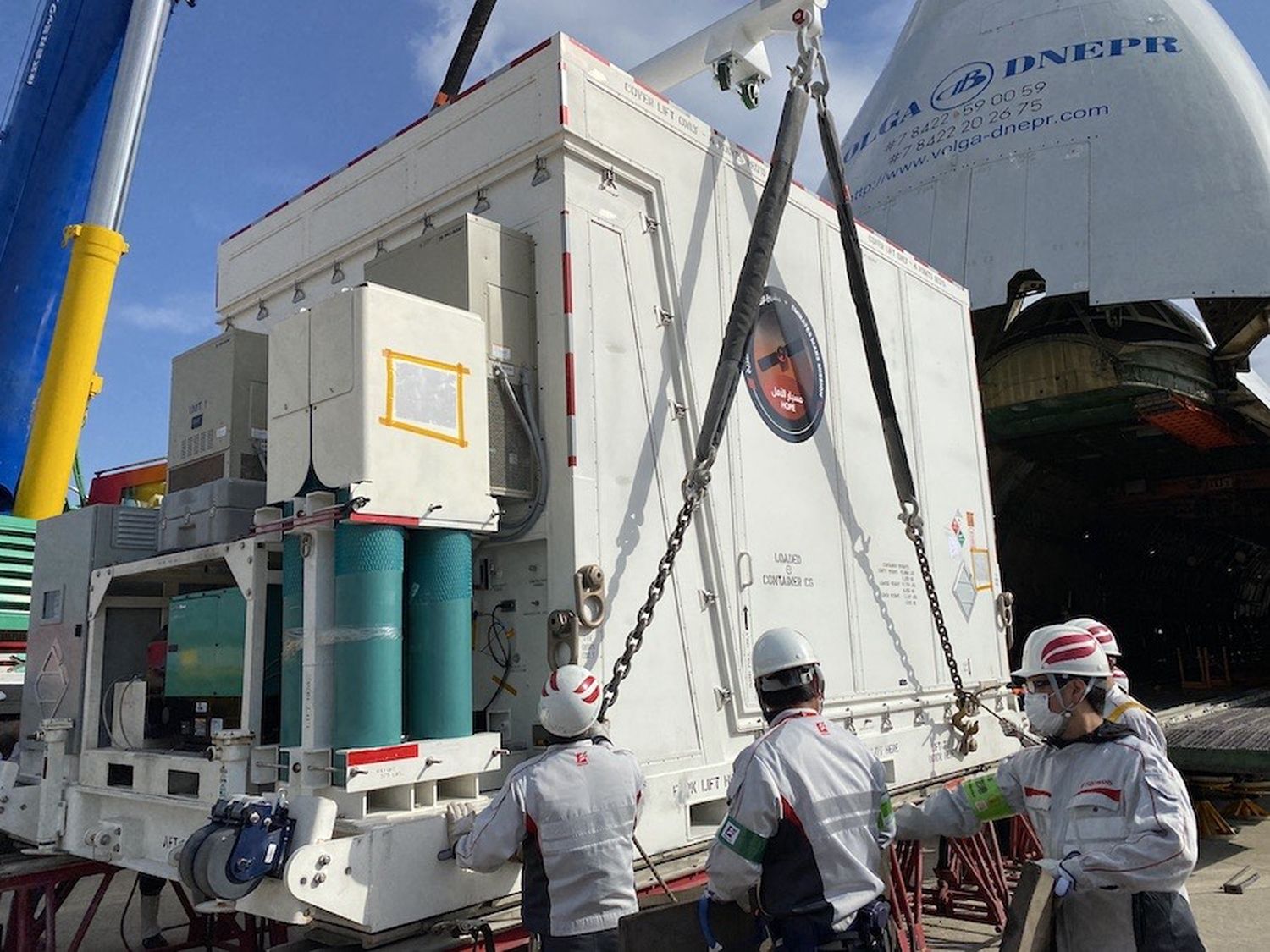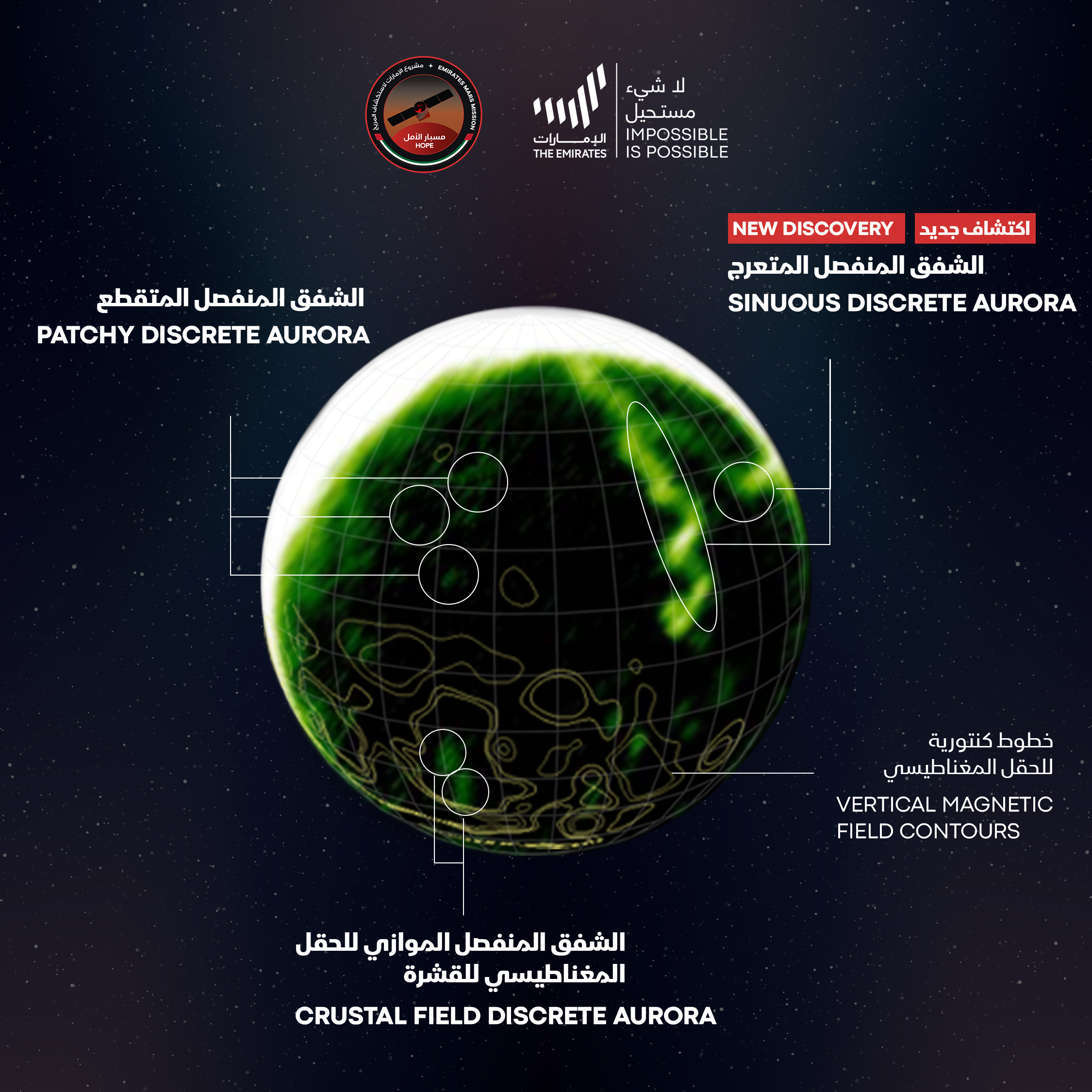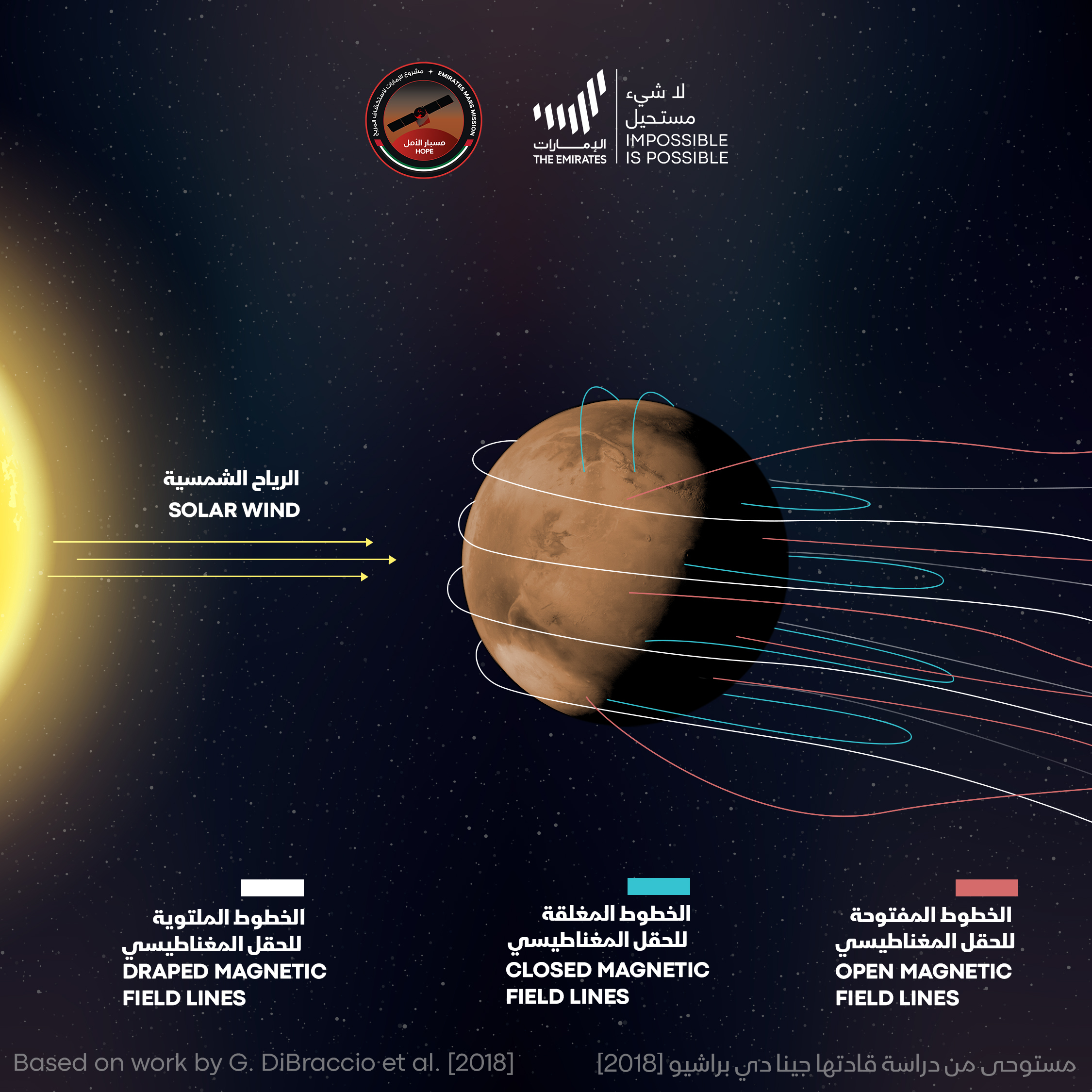The United Arab Emirates’ mission to Mars, the first interplanetary exploration by an Arab nation, has released images of Mars’ enigmatic auroras.
Following a new series of observations that shed light – and at the same time open new questions – on the interactions between Mars’ atmosphere, the planet’s magnetic fields and the solar wind, the team released new images of the Martian auroras. The observations include a never-before-seen phenomenon, dubbed by the team as a «sinuous discrete aurora»: a huge worm-shaped aurora that covers half of the planet.
New questions
The scientist in charge of the mission, Hessa Al Matroushi, pointed out that «when we obtained the first images of the discrete auroras on Mars, we knew that we had made observations that had never been seen before. Because of them, we made the decision to increase our focus on these auroras.» The spacecraft, called Hope, allows «synoptic snapshots of the atmosphere of almost the entire planet simultaneously, to investigate atmospheric phenomena and interactions. This makes it possible to see auroral effects on a large scale.»
The aurora is formed by long streaks of energized electrons in the upper atmosphere, extending several thousand kilometers. The images were taken when Mars was experiencing the effect of a solar storm, which caused a faster and more turbulent stream of electrons than usual. The magnetic field, which extends around Mars, is buffeted by the solar wind and, combining with the magnetism of the Martian crust, forms the Mars magnetotail, a complex set of magnetic fields located on the planet’s night side.
Related content: Mexican space agency to work with NASA to educate about space industry
Omran Sharaf, director of the project, also mentioned that «this discovery opens new avenues of research on these transient and dynamic phenomena. Pioneering such observations was a central goal of the mission. These images certainly meet that goal.
About the probe and the mission
The observations, made with the instrument named EMUS (The Emirates Mars Ultraviolet Spectrometer), are in the wavelengths from 90 to 180 nanometers. The auroras are in the 130.4 nm band and show the point at which electrons crash into the molecules of the Martian upper atmosphere, about 130 km above the planet’s surface. These electrons come from the solar wind and are energized by the electric fields of Mars’ magnetosphere.
Dr. Rob Lillis, a member of the EMUS team at the University of California, Berkeley, added, «This aurora was a shocking discovery from the United Arab Emirates mission to Mars and, in many ways, has left us scratching our heads. We have some ideas, but no firm explanation, about the process of aurora formation in this way and on a planetary scale. We will re-examine observations from previous missions to the planet (MAVEN and Mars Express) to try to decipher what is happening.»
Hope orbits the planet in an elliptical orbit with an inclination of 25 degrees. Its periapsis is 20,000 km and its apoapsis is 43,000 km from the Martian surface. The probe completes an orbit every 55 hours and captures a complete data sample every nine days. The spacecraft, which weighs 1,350 kgs and is the size of a compact car, is fully autonomous. It arrived in Mars orbit in 2021, the 50th anniversary of the founding of the UAE.




Comentarios
Para comentar, debés estar registrado
Por favor, iniciá sesión